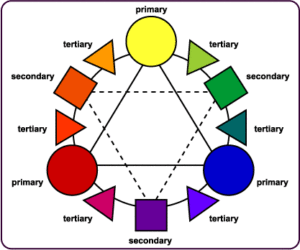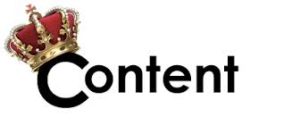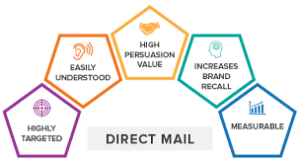So how do you see colour affecting your marketing, this includes online as well as offline. Get the colour wrong and you may well struggle to strive, sounds silly but the psychology behind the use of colours is massive.
Did you know that the colours you choose for your marketing materials affects the impact they make on your target market?
Colors act as a sort of non-verbal communication. They also contain symbolism. So in your marketing pieces, it is helpful to keep in mind how the eye and the mind perceive certain colors as well as what the meanings are that we associate with each color.
Sometimes colours create a physical reaction (i.e., red has actually been shown to raise blood pressure and blue is known to create a calming effect). And other times colours have a cultural meaning (i.e., in the United States & Great Britain white is used for weddings but in some cultures it is the colour for mourning).
Colours also follow trends. For example, burnt orange and avocado are synonymous with the 60s and 70s to many consumers, so unless you’re selling a retro look, it’s best to avoid those as the primary colour for your marketing.
To understand the impact marketing with the right colour has we need to know about colour theory.
Finding a good combination of colours be tough. Colour theory makes it easier. In order to find a good colour scheme (the set of colours that produces the best impression), we need to choose a base colour then see which colours can coexist with it and which can’t. Some combinations are uncomfortable, or disturbing, while others are pleasant.
As you probably know from school, the primary colors are red, blue and yellow. All other colors are made by combining two or three of these colors. Primary colours are seen as simple and direct. So they would be good to use for projects that aren’t extravagant such as for preschools, kids’ stores, etc.
Secondary colours are half way between the three primary colours. They are orange, green and violet. Bright secondary colours can convey action and excitement. They would be great to use for sports brochures, restaurants that have a lively clientele, etc.
 Tertiary colours are created when primary colors are mixed with adjacent secondary colours. Take a look at the colour wheel and notice which colours are considered tertiary. You’ll notice that they are in between primary and secondary colors. Teal and fuchsia are tertiary colours.
Tertiary colours are created when primary colors are mixed with adjacent secondary colours. Take a look at the colour wheel and notice which colours are considered tertiary. You’ll notice that they are in between primary and secondary colors. Teal and fuchsia are tertiary colours.
Hue, saturation and value of colours
Infinite colors can be created by altering three variables: the hue, the saturation and the value of the colour.
The hue is the shade of a particular colour. Deep hues of violet, gold, maroon, etc. are used by marketers to convey richness and security while earth tones feel natural and inviting.
The purity of a hue is the saturation. A highly saturated hue has a vivid, intense colour, while a less saturated hue appears more muted and grey.
Value refers to the relative lightness or darkness of a certain area. It is often used for emphasis. For example, variations in value are used to create a focal point for the design of a picture.
Colours often have different meanings in different cultures as we discussed before. If you will be working with a client from another part of the world, it would be beneficial for you to do a little research to find out what colours mean in that society.
Even in Western societies, the meanings of various colours have changed over the years. But today, researchers have generally found the following to be accurate:
Black
 Black is the colour of authority and power. It is popular in fashion because it makes people appear thinner. It is also stylish and timeless. Use the colour black to convey elegance, sophistication, or perhaps a touch of mystery. Black works well with bright, jewel-toned shades of red, blue, and green. Black is the ultimate dark colour and makes lighter colours such as yellow really pop out. Photographs often look brighter against a black background.
Black is the colour of authority and power. It is popular in fashion because it makes people appear thinner. It is also stylish and timeless. Use the colour black to convey elegance, sophistication, or perhaps a touch of mystery. Black works well with bright, jewel-toned shades of red, blue, and green. Black is the ultimate dark colour and makes lighter colours such as yellow really pop out. Photographs often look brighter against a black background.
White
Doctors and nurses wear white to imply sterility. In most Western countries white is the colour for brides; however, in Eastern cultures it’s the colour for mourning and funerals.
In most cases white is seen as a neutral background colour and other colours, even when used in smaller proportion, are the colors that convey the most meaning in a design. Use white to signify cleanliness or purity or softness. Some neutral beige, ivory and creams carry the same attributes as white but are more subdued, less brilliant than plain white.
Used with light or pastel tones, white is soft and spring like and helps to make the pastel palette more lively. White can make dark or light reds, blues and greens look brighter, more prominent.
Brown
 Brown represents wholesomeness and earthiness. The colour brown and its lighter versions tan, taupe, beige or cream make excellent backgrounds helping accompanying colours appear richer, brighter. Use brown to convey a feeling of warmth, honesty and wholesomeness. Although found in nature all year round, brown is often considered an autumn and winter colour. It is more casual than black.
Brown represents wholesomeness and earthiness. The colour brown and its lighter versions tan, taupe, beige or cream make excellent backgrounds helping accompanying colours appear richer, brighter. Use brown to convey a feeling of warmth, honesty and wholesomeness. Although found in nature all year round, brown is often considered an autumn and winter colour. It is more casual than black.
Shades of brown coupled with green are often used to convey the concept of recycling or earth-friendly products. Light brown implies genuineness while dark brown is similar to wood or leather. Brown can also be sad and wistful.
Red
Red is power. The most emotionally intense colour, red stimulates a faster heartbeat and breathing. It is also the colour of love. Use red to grab attention and to get people to take action. Use red to suggest speed combined with confidence and perhaps even a dash of danger. A little bit of red goes a long way. Small doses can often be more effective than large amounts of this strong colour. Multiple shades of red and even pink or orange can combine for a cheerful palette. Red is often used in restaurant decorating schemes because it is an appetite stimulant.
Pink
The most romantic colour is pink and can be tranquilising. Sports teams sometimes paint the locker rooms used by opposing teams bright pink so their opponents will lose energy. Studies have shown that large amounts of pink can create physical weakness in people.
Both red and pink denote love but while red is hot passion, pink is romantic and charming. Use pink to convey playfulness or tenderness. Add strength with darker shades of pinks and purple and burgundy.
All shades of pink get sophisticated when combined with black or grey or medium to darker shades of blue. Medium to dark green with pink is also a good combination.
Blue
 Blue is one of the most popular colours. It causes the opposite reaction as red. Peaceful, tranquil blue causes the body to produce calming chemicals.
Blue is one of the most popular colours. It causes the opposite reaction as red. Peaceful, tranquil blue causes the body to produce calming chemicals.
Blue conveys importance and confidence. Long considered a corporate colour, blue, especially darker blue, is associated with intelligence, stability, unity, and conservatism.
A deep royal blue or azure conveys richness and perhaps even a touch of superiority. Combine a light and dark blue to convey trust and truthfulness. Create a conservative but sophisticated look with subtle contrast by combining light and dark shades of blue.
Mix the color of blue with green for a natural, watery palette. Add grey for understated elegance.
Sky blue and robin’s egg blue, especially when combined with neutral light brown, tans, or beige are environmentally friendly color combinations.
Throw in a dash of blue to cool down a hot red or orange scheme. Grab attention with the contrast of blue and yellow.
Dark blue with white is fresh, crisp and nautical. Use dark blue with metallic silver accents for an elegantly rich appearance.
Green
Green symbolises nature. It is the easiest colour on the eye and can improve vision. It is a calming, refreshing colour. Hospitals often use green because it relaxes patients. Dark green is masculine, conservative and implies wealth.
With both a warming and cooling effect, green denotes balance, harmony, and stability. Use several shades of green for a fresh, springtime feel.
Green with blue produces echoes of nature, water and forest and can denote new beginnings and growth. Green with brown, tan, or beige says organic or recycled and can be a good colour combination for packaging of those types of products. Tri-color combinations of green with yellow and black or white are sporty, outdoorsy colors. Purple with green can be highly contrasting causing a lively effect.
Yellow
Cheerful sunny yellow is an attention getter. While it is considered an optimistic colour, people lose their tempers more often in yellow rooms, and babies will cry more. It is the most difficult colour for the eye to take in, so it can be overpowering if overused. Yellow enhances concentration, hence its use for legal pads. It also speeds metabolism.
Although it can work as the primary colour, yellow often works best as a companion to other colours. Use bright yellow to create excitement when red or orange may be too strong or too dark. Yellow can be perky. Use yellow to perk up a more subdued cool palette of blues and greys. Use lemon yellow with orange to carry out a healthy, summery, citrus theme. Very pale yellows can work as neutrals alongside darker or richer colours. Yellow and blue are a high contrast, eye-popping combination. Mix yellow with neutral grey and a dash of black for a high-tech look.
Purple
 The colour of royalty, purple connotes luxury, wealth, and sophistication. It is also feminine and romantic. However, because it is rare in nature, purple can appear artificial.
The colour of royalty, purple connotes luxury, wealth, and sophistication. It is also feminine and romantic. However, because it is rare in nature, purple can appear artificial.
Deep or bright purples suggest riches while lighter purples are more romantic and delicate. Use redder purples for a warmer color scheme or the bluer purples to cool down.
A deep eggplant purple with neutral tans or beige is an earthy, conservative color combination with a touch of the mystery that purple provides. Green and purple can be a striking combination in deep or bright jewel tones or use lighter shades for a cheerful, spring like feel. Pink and purple has feminine appeal.
Gold
The colour gold is associated with wealth and prosperity. Add a small amount of metallic gold ink to a project for a special, rich touch. Bright gold catches the eye while darker subdued shades of gold lend richness and warmth.
Orange
As a warm colour orange is a stimulant, stimulating the emotions and even the appetite.
If you want to get noticed without screaming, consider the colour orange, it demands attention. The softer oranges such as peach are friendlier, more soothing.
Orange really pops with a medium blue. Red, yellow, and orange can be a fiery hot combination or, in tamer shades, a fresh, fruity experience. Make it tropical by pairing it with green.
Orange is often synonymous with autumn yet the brighter oranges are a summer colour. Orange is mentally stimulating as well as sociable. Use it to get people thinking or to get them talking.
Turquoise
Create feminine appeal with lighter shades of turquoise. Some shades of turquoise have an old-fashioned 50s and 60s retro feel. Teal has a darker, somewhat more sophisticated look. Like the mineral, turquoise shades range from almost sky blue to deep greenish blues.
Keep the soft, feminine qualities going by mixing turquoise with lavender and pale pinks. A bright turquoise and pink create a sparkly clean, retro look. Make it art deco by pairing turquoise with white and black. Turquoise with grey or silver as well as terra cotta and light browns have a European flavour. Turquoise with orange or yellow creates a fresh, sporty look.
Grey
Like black, grey is used as a colour of mourning as well as a colour of formality. All shades of grey can be good, neutral background colours. Use lighter greys in place of white and darker grey in place of black. Taupe, a greyish brown neutral is a conservative, slightly earthy, warm shade of grey.
Light greys with pastel shades of pink, blue, lavender and green have a feminine quality. Darken those colours for a more masculine feel. Cool a warm palette by adding grey to rich reds or golden yellows.
Silver
Silver often symbolises riches just as gold does. Silver can be glamorous and distinguished.
It can be earthy, natural or sleek and elegant. Silver can be used much like grey although when using shiny metallic inks, small amounts for accents is best.
Silver coupled with turquoise evokes the Southwest. A touch of silver pops with medium blue. Use silver with other colours to create a high-tech or industrial look.





















